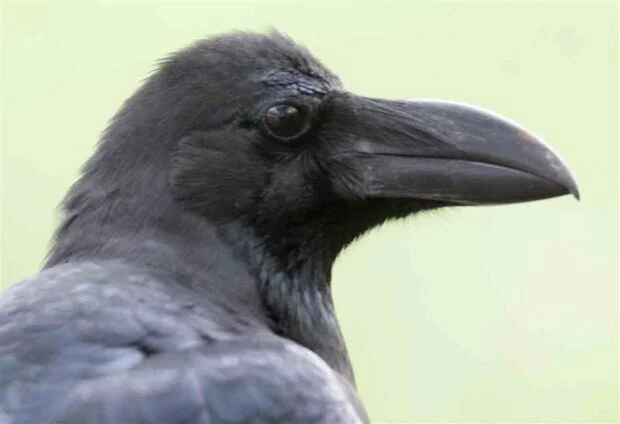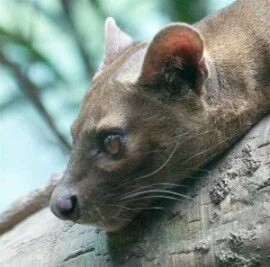Armies of the Forest: Killer Ants
The legends are well known to people across the world; swarms of destructive ants which consume any creature slow or daring enough to remain within their range, even humans. They overcome their prey, stinging and biting from all sides. In the case of sufficiently large prey, they enter the nasal passages and mouth of the victim and kill it through asphyxiation. The corpse is sliced up into manageable pieces by the powerful mandibles of the insects and carried back to their nest. The stories depict infants and old people as the victims of these ants. The insects invade at night, when most people are asleep, and attack their victims. By the time the prey wakes up, they are completely engulfed by the ants and under attack via bites and stings. The end results are commonly tragic and unsightly.
These tales tend to be exaggerated and used as inspirations for grisly scenes in science fiction films. However, unlike urban legends, these stories possess a frightening level of reality. There are indeed cases of humans being killed and consumed by ants. The thought of such a death is too much for most to imagine as it would be a very slow and torturous death. These cases, however, are rare. There are not too many reported deaths of such a magnitude, and even general human kills of any sort are low in number compared to other animal attacks. However, a human must not be killed by these insects in order to understand their hunting prowess. Dangerous ants demand respect due to the fact that they can become a threat to nearly any other creature in their environment. These interesting and social animals deserve more positive attention than they sometimes receive. The surprising level of teamwork found in their colonies and their ability to become powerful enough to kill anything in their path certainly set them aside from most other creatures except for perhaps man. Certain species have caught man’s eye as being particularly dangerous. Among them will be the species discussed
Siafu ants (Genus Dorylus) are some of the most well known ants in the world. They are considered a menace due to their combination of an aggressive nature and massive colonies. Their range extends from central Africa to portions of Asia. They are known for living in colonies of up to 20,000,000 or so ants and are commonly documented taking part in great marches in search of food or a new settlement location. Soldiers exist among the species, possessing both stingers and powerful mandibles which rarely let go once they grab onto prey or an enemy. In fact, African tribes have used the ants as sutures; they grab an individual ant and press its mandibles to a small gash in such a way that the ant’s jaws clamp onto both sides of the wound and close it. The ant’s body is then crushed off and only the head remains, still holding the wound area together. Although painful, it is surprisingly effective and has become a useful method of wound treatment for the tribes. This makes the ants useful for some people. The ants also function as pest regulators, killing of some of the local pest population during their common raids. However, the ants and humans don’t always share such a pleasant relationship. It is the Siafu ants that have also become well known for being man eaters. This occurs when the ants march too closely to villages or settlements of any sort. Sleeping prey, human or animal, sometimes awaken to a barrage of stings and painful bites. The end result can easily become a terribly painful death. These deaths, as unfortunate and gruesome as they are, are simply the side effects of living in the Siafu’s range.
These ants can take down almost any creature that is unable to escape their path in time. Snakes, turtles, various insects, and many small mammals commonly fall prey to the Siafu. Also, as mentioned before, larger animals and people can also become food items for the insect army. Once brought down, the prey is sliced up into portable chunks which are carried back to the nest and stored for later consummation. These marches are nearly unstoppable, and most animals would do well to step aside and stay far away from these troops.
However, there is more to the Siafu than killing and death. They are misunderstood, much like many other predatory animals. The ants must protect their colony at all costs. This is especially true in times of travel, where the ants are most vulnerable. They must take whatever prey is made available to them, for the sake of their colony’s nourishment as well as the legacy of their family. When one studies their behavior, a surprising level of care and detail is found. For example, in order to protect the smaller ants during travel, soldier Siafu form “highways” which cover and surround the weaker ants as they march onwards.[1] The soldiers wave their jaws around from the outer side of this protective covering so as to intimidate any passing animals.
The Dorylus genus is far from the only group of feared ants. The genus Salenopsis includes the well known fire ants. Hundreds of species make up the genus. Fire ants are known for their painful stings and large colonies. The genus is widespread, found in many different areas around the world. They tend to feed on plants and seeds but can also prey on other insects if presented with the chance. Fire ants have become a great pest ever since they were accidentally introduced in some countries, causing major problems for the environment in the invaded lands.
The species S. Invicta was accidentally imported to the United States as well as Australia and Taiwan via goods cargo shipments. Since then, they have become a problem to the ecology of their new ranges as they have been known to kill animals as large as cow calves. The sensation of a sting site is often compared to a burn, hence the common name of the species. Those allergic to the venom of the ants can even suffer death if left untreated. The species is said to cause $750,000,000 in damage annually, mostly due to crop and livestock loss.[2] The ants are usually difficult to deal with due to the fact that colonies can have several queens.[3] Sub-queens exist within the colonies, and are known to flee from the nest if great danger arises. These ants will then become active queens which can begin developing new nests.
Although the US and Taiwan have had little luck in fighting off the invading species, Australia’s National Fire Ant Eradication Program has made great progress in eradicating the fire ant population. There are still areas with evident ant problems, but the program has been successful in dramatically lowering the population numbers in certain areas.[4] It is possible that, given more time, a greatly effective counter to the fire ant infestation will be discovered. Until then, however, the ants will continue to cause terrible damages to the environment. As a result of these losses in money and the environment, the Invicta species has become, without a doubt, one of the more problematic ant species in the world.
Bulldog ants (Genus Mymecia) are a dangerous group of ants that can become as dangerous as fire ants. Although fossils show that they were once rather widespread, today they are only found in Australia. [5]The Mymecia genus is highly aggressive. Some ants are even known to fight with others from the same colony. They possess long, slender jaws which can deliver a powerful bite. However, this bit is mostly used to hold onto their victim so that they can begin to sting the intruder. The sting is highly toxic and can kill if the victim is allergic to the venom. Combined with their high aggression and excellent vision (they are known to recognize intruders from a meter away), these ants can easily become a problem if they settle near homes or livestock areas.
Bulldog ants feed on bees and other ant species. However, native carpenter ants have been known to take part in battles with the Mymecia ants. Carpenter ants can become a threat due to their ability to send chemical signals to their nestmates, which bulldog ants are not capable of doing.[6]This could be a natural form of keeping the ant populations in check by making sure that one species does not overpopulate. Assuming bulldog ants are not transported to other parts of the world like fire ants were, this rivalry can keep the ants from becoming major threats.
As stated before, ants are often misunderstood creatures. Some people learn to live with ants and respect them, such as the many tribes present in the insects’ territories. Other humans, on the other hand, fear ants due to their unnoticeable nature, ability to attack, and style of living in massive colonies. Due to human error, incidents such as those with the fire ants occur, and the ants are demonized as terrible creatures by many. Yet upon closer inspection, one finds hard working societies which are only doing what they were designed to do: survive and prosper. They do just that, and with incredible prowess.
[1] Arizona Pest Control Company. “Siafu Ants.” (2009): Arizona Pest Control.com. 02 Aug 2009.
[2] McDonald, Maggie (February 2006). “Reds Under Your Feet (interview with Robert Vander Meer)”. New Scientist 189 (2538): 50. http://www.newscientist.com/channel/opinion/mg18925381.700-interview-extinguishing-red-fire-ants.html.
[3] “Colonies in Florida dissected and observed with greater than five queens”. Bioone.org. 1970-01-01. http://www.bioone.org/perlserv/?request=get-document&issn=0015-4040&volume=086&issue=03&page=0381. Retrieved 2010-06-28.
[4] “Fire ants.” (2010): Queensland Government.com. 07 Dec 2010.
[5] “Bulldog Ants.” (2007): National geographic.com. May 2007.
[6] Ibid

